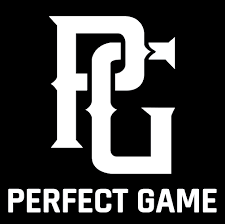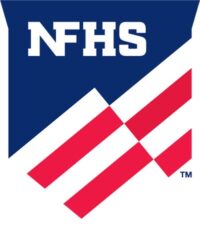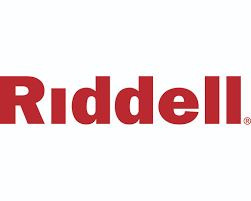OVERLAND PARK, Kan. (August 15, 2018) – The effective date of the NOCSAE revised football helmet standard to limit rotational accelerations was pushed back to November 2019 from November 2018 after a software issue that led to inaccurate data was discovered. The NOCSAE Standards Committee voted in a public online meeting August 14 to revise the pneumatic ram testing and establish the new effective date of Nov. 1, 2019.
The latest delay came after the NOCSAE Standards Committee voted June 22 at the NOCSAE Summer Standards Meeting in San Diego to move the effective date to May 2019 to allow time to investigate and address the issue.
A priority focus for NOCSAE has been the development of a football helmet standard to limit rotational accelerations involved in many concussions. The revised football helmet standard, which was finalized in 2017, utilizes a complex software program to collect helmet performance data during pneumatic ram testing. On June 15, the software developer advised NOCSAE that an error in one of the data analysis algorithms has caused some of the data to be reported inaccurately. The inaccurate data relates to the rotational acceleration results that are the basis of the revised standard. NOCSAE said it will provide updates as more information becomes available.
Youth Specific Helmet Standard
For more than 10 years, NOCSAE has worked to develop a youth football helmet standard that is evidence-based. NOCSAE’s existing football helmet standard applies to players of all sizes and helmets that are small enough to be worn by “youth players” are required to be tested on a biofidelic head form that replicates the head of a 50th percentile 10-year-old male. Currently, there is insufficient data to suggest a distinct helmet mass limit for youth or other similar performance changes would provide more injury protection, or would protect against injury risks not already addressed.
Last year, NOCSAE convened a Scientific Advisory Committee to explore the latest scientific support for a standard and authorized funding for two research initiatives. Specific objectives of the research include (among others) describing the magnitude and frequency of head impacts for youth football players ages 5-10 and 11-14 years old and identifying relationships between head/helmet mass and neck strength for youth players to inform helmet performance requirements. Dr. Robert Cantu, NOCSAE Vice President and Boston University School of Medicine, Clinical Professor Department of Neurosurgery shared a progress report on the research activities. The Neurotrauma Impact Science Laboratory at the University of Ottawa, Ontario, Canada tested potential parameters for a youth football helmet standard, based on observed youth football impact dynamics. Initial findings of this research have been submitted for publication. Virginia Tech is leading the second study to collect biomechanical and clinical data directly from youth football players using instrumented helmets. More information is available in NOCSAE’s Youth Helmet Football Standard Research and Development Update.
Cheek-Flap Add-On Products for Baseball Helmets
In recent months, there has been an increase in public interest and questions related to cheek-flap products for baseball batter’s helmets and NOCSAE certification. In May, NOCSAE issued a statement on Certification to NOCSAE Standards and Add-On Helmet Products to clarify that such additions to a helmet create a new and untested model, as defined in the NOCSAE standards. When this happens, the manufacturer has the right to declare its certification void.
NOCSAE has a face protection standard for baseball and softball that protects the entire face and products certified to this standard are widely available. Cheek-flap products do not meet the NOCSAE standard.
Parents, coaches and athletes should understand that no cheek-flap products meet the NOCSAE standard for face protection. This applies to separate add-on products sold by a third party, products designed by a manufacturer to be used with their batter’s helmets, or batter’s helmets that include a permanent, built-in cheek-flap. While the batter’s helmet may be certified to NOCSAE standards, the cheek-flap portion is not included in that certification, is not tested, and does not meet the NOCSAE standard for face protection.
Counterfeit Lacrosse Balls
NOCSAE continues to take aggressive steps to stop the sale of counterfeit lacrosse balls by illegitimate vendors, primarily on the Internet. Over the last year, NOCSAE has worked with Amazon, GoDaddy and other online shopping platforms to shut down vendors selling lacrosse balls that have NOCSAE and SEI certification language and logos, but which have not been certified to the NOCSAE standard.
NOCSAE is warning coaches, parents and athletes to use caution when purchasing lacrosse balls. Consumers should not rely on the presence of logos to assess whether lacrosse balls meet the NOCSAE standard. To ensure these products have been certified to the NOCSAE standard, NOCSAE recommends checking the name of the manufacturer or retailer in the certified product list available on the Safety Equipment Institute (SEI) website (www.seinet.org). NOCSAE will continue to provide updates on this issue as new information becomes available.
Modifications to Standards
The Standards Committee also acknowledged minor modifications to existing standards, including clarifications to testing criteria for the standard linear impactor test method and the standard test method and performance specification for soccer shin guards.
More information on all NOCSAE standards is available at www.nocsae.org.





 Back
to News
Back
to News